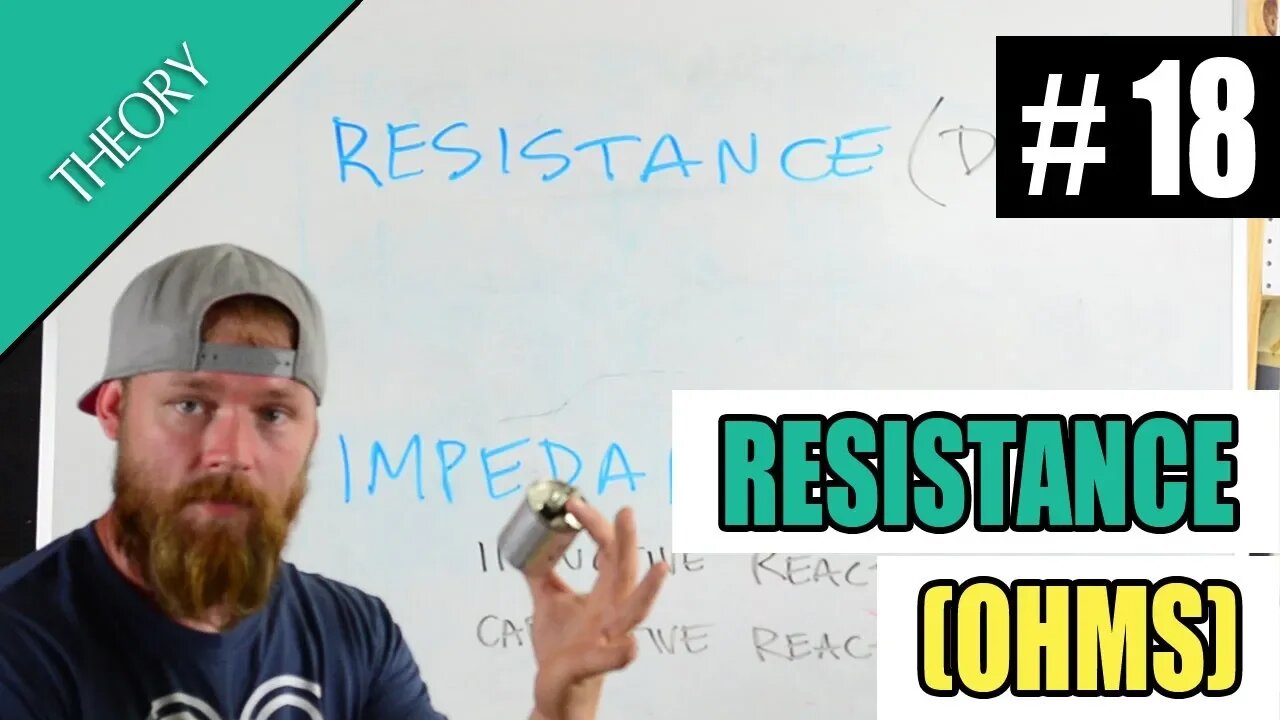Premium Only Content

What is Resistance/Impedance (Ohms) - Why electricians need to know it
Resistance is a very important element of an electrical circuit. As electricians we use the term impedance more than we use resistance, as impedance refers to AC circuits - whereas resistance refers to DC.
👾🤖PRACTICE EXAMS🤖👾
https://www.electricianu.com/practice-exams
😎👕MERCH👕😎
https://www.electricianu.com/merchandise
📲👥SOCIALS👥📲
Instagram - https://www.instagram.com/electrician_u
Discord - https://discord.gg/7ykYfbh
Facebook Page - https://www.facebook.com/theelectricianu
Facebook Group - https://bit.ly/2tz7eQh
TikTok - https://www.tiktok.com/@electricianu
Resistance and Impedance are both methods of slowing down current enough for it to be usable. When current is unimpeded (meaning no resistance in it's way) it can create an immense amount of heat, which may melt the insulation off of the wires or cause the wires to start welding themselves together. This is a very dangerous and dramatic event when it does happen.
So putting a coil of wire in the middle of the circuit slows the current down to a usable level. Most appliances on electrical circuits operate because there is a coil of wire on the inside of them. When current leaves the source and travels into the appliance, it has to travel through instructors and capacitors on its way out of the appliance and back up to the source. In an AC circuit the direction alternates this happens 60 times per second. This works the same way in a standard DC circuit, except with the DC circuit there are resistors, so we call these circuits resistive circuits.
Impedance in an AC circuit has 2 parts that make it up. Inductive reactance and capacitive reactance. I will get more into these in a later video, but for now just understand that there is a definite relationship between a capacitor and and inductor in how they affect current in an AC circuit. An inductor and a capacitor act to cancel some of the effects of each other out if they are both introduced in a circuit. However if only one is in the circuit it will act opposite than the other one would. For example if an inductor is in the circuit, you would have an inductive circuit that would make the Voltage waveform lead the Current waveform. Conversely in a capacitive circuit, the opposite would occur - you'd have a Current waveform leading a Voltage waveform. More on this later.
--
IF YOU ENJOY THESE VIDEOS PLEASE SUBSCRIBE AND "LIKE" THEM ABOVE. ALSO CHECK OUT THE ELECTRICIAN U PODCAST ON ITUNES!!
#electricianclasses #electricaltraining #electriciantraining #resistance #impedance #ohms
-
 0:58
0:58
Electrician U
1 year agoFISH STICKS! Every electrician needs these!
6.33K -
 LIVE
LIVE
LFA TV
14 hours agoLIVE & BREAKING NEWS! | THURSDAY 11/13/25
4,051 watching -
 LIVE
LIVE
The Mel K Show
59 minutes agoMORNINGS WITH MEL K - Peak Manufactured Hysteria as Epstein Boomerang Returns - 11-13-25
446 watching -
 UPCOMING
UPCOMING
The Shannon Joy Show
1 hour agoEpstein Emails Released - Trump Implicated! Susie Wiles & Stefanie Spear - The Women Controlling Trump & RFK * The Psychology Behind The Psyop - Live Exclusive W/ Dr. Joe Sansone!
112 -
 LIVE
LIVE
Grant Stinchfield
31 minutes agoThe Deputy Who Stood Up and Got Taken Down... Only Gov. DeSantis Can Help This Hero Now!
50 watching -
 1:03:48
1:03:48
VINCE
3 hours agoDems' Shutdown Is Gone. Now They've Revived Epstein | Episode 168 - 11/13/25 VINCE
163K72 -

Badlands Media
10 hours agoBadlands Daily: November 13, 2025
22.8K13 -
 48:32
48:32
Simply Bitcoin
19 hours ago $0.96 earnedThe Bitcoin Crucible w/ Alex Stanczyk & Tomer Strolight - Episode 8
5.81K1 -
 LIVE
LIVE
LadyDesireeMusic
2 hours ago $0.60 earnedLive Piano Renditions & Chat - Good Vibes - Make Ladies Great Again
93 watching -
 1:02:58
1:02:58
The Big Mig™
3 hours agoSchumer’s Government Shutdown Is Over! Hallelujah
4.18K10